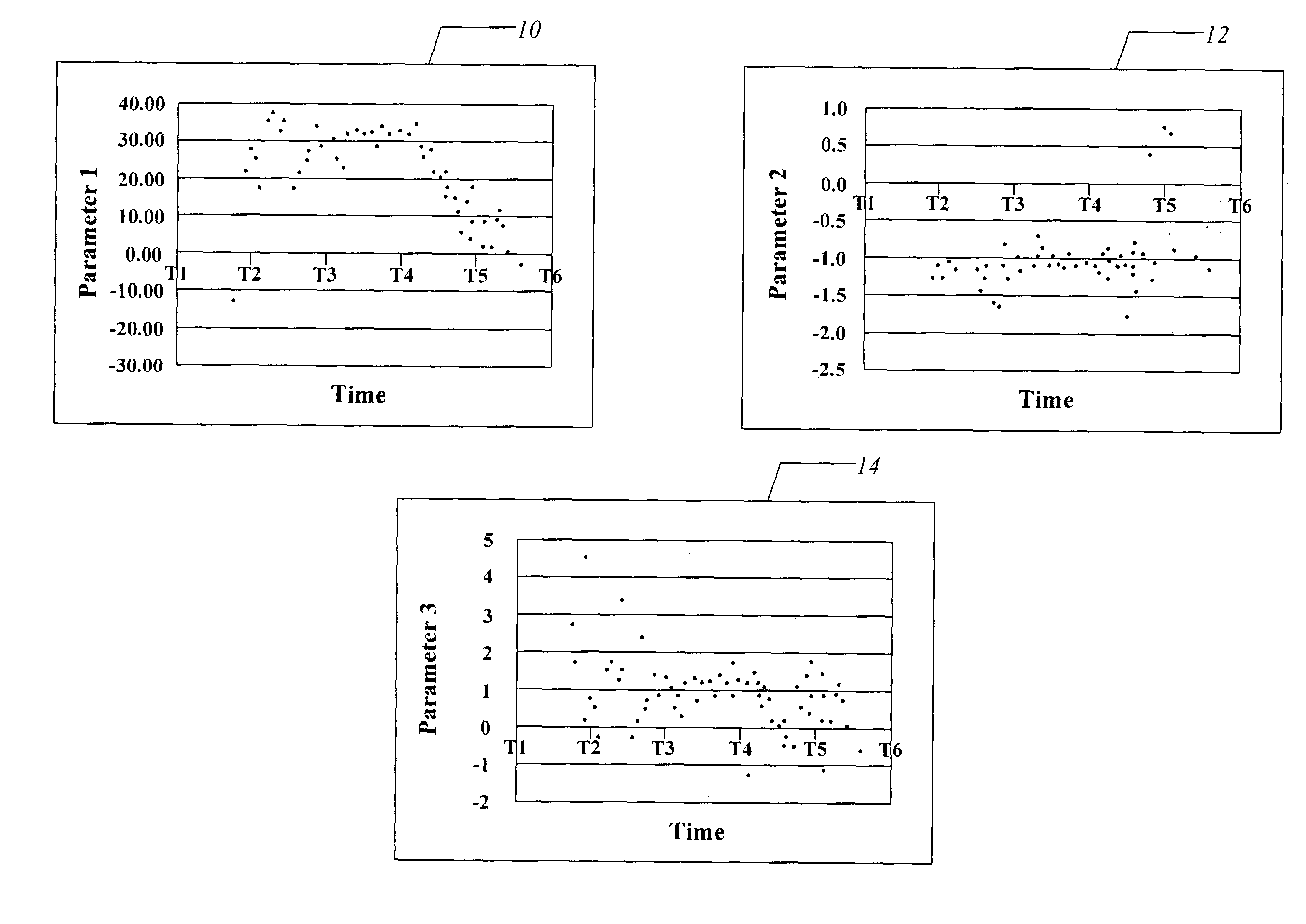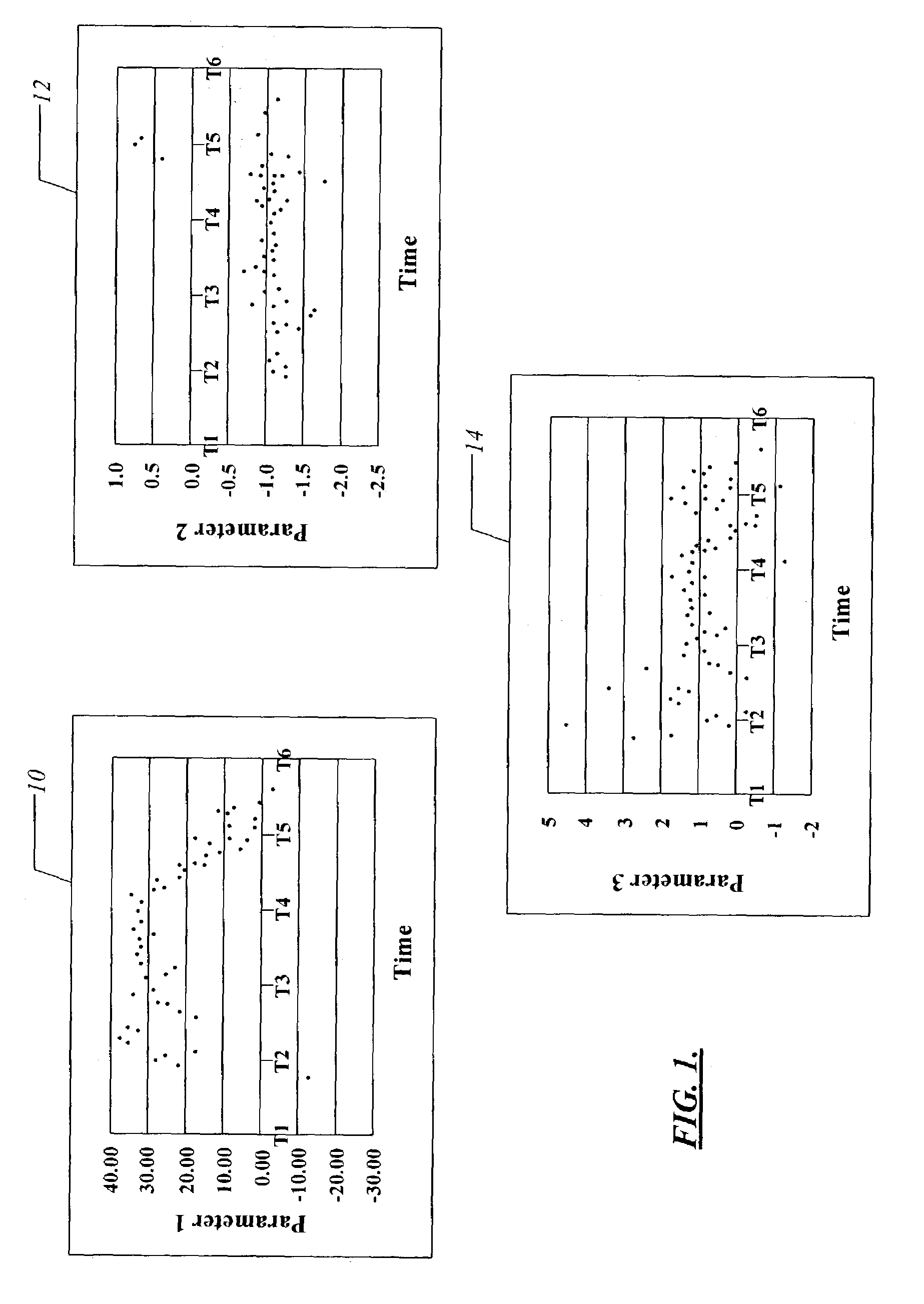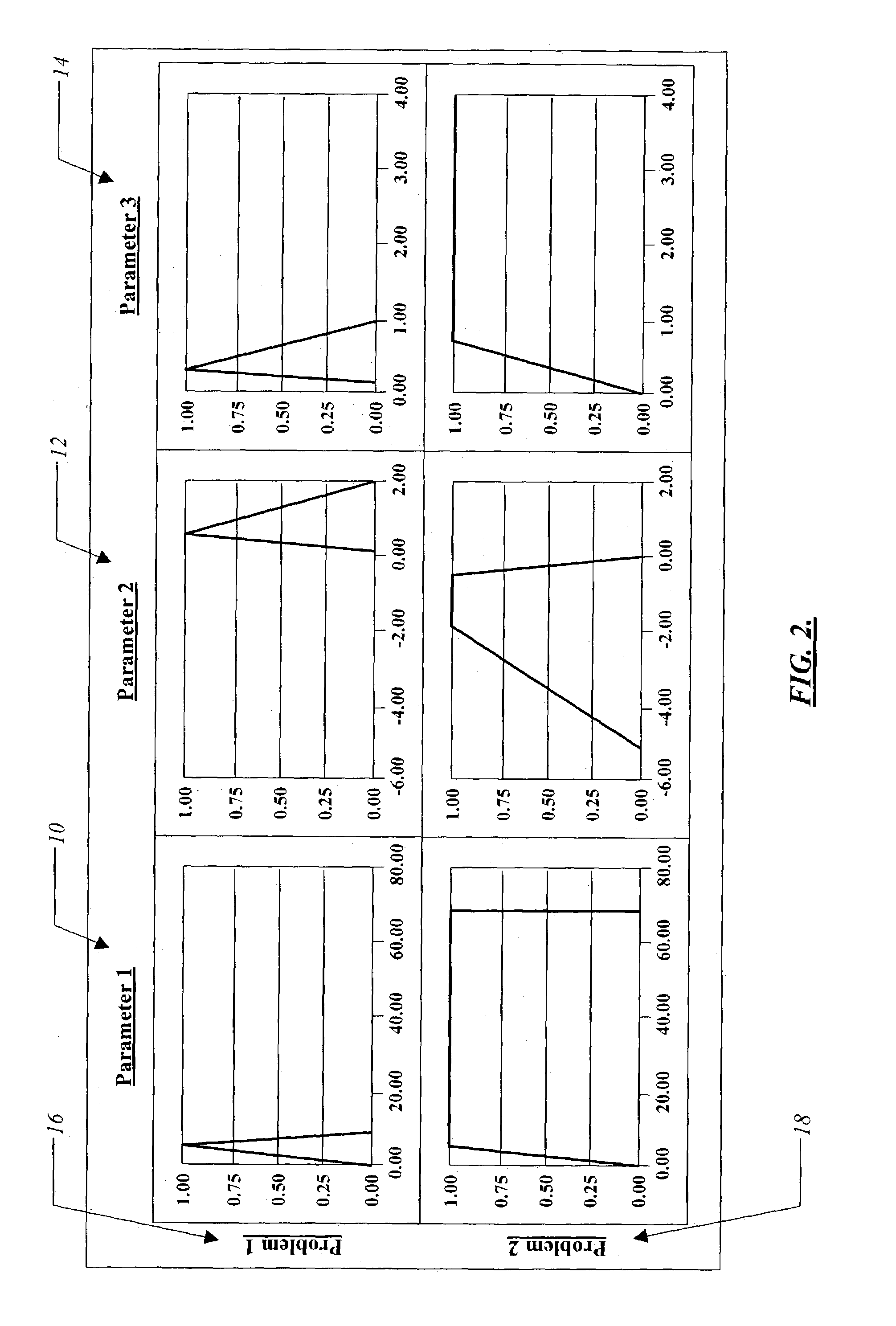Systems and methods for diagnosing the cause of trend shifts in performance data
a technology of performance data and system, applied in the field of automatic statistical systems and methods, can solve the problems of inefficient manual processes, inability to accurately diagnose the cause of trend shifts in performance data, and inability to accurately predict the effect of trend shifts, etc., to achieve the effect of optimizing the performance of automated diagnostic systems, large size and large siz
- Summary
- Abstract
- Description
- Claims
- Application Information
AI Technical Summary
Benefits of technology
Problems solved by technology
Method used
Image
Examples
Embodiment Construction
[0015]As an overview, the automated diagnostic systems and methods of the present invention allow an expert to build a plurality of fuzzy models describing how the mean of each of a plurality of performance parameters shifts for each of a plurality of predetermined problems. Outliers are removed using standard statistical techniques. The performance data is split by time in such a way as to allow linear or non-linear regressions to be run through each of a plurality of performance data segments with the lowest total residuals. The split points are evaluated to determine which are most likely to represent the beginning of a given problem. Data sets from the end of the performance data and around the best split point(s) are chosen such that each data set includes as many data points as possible without a standard deviation too far above that of the standard deviation of the linear regression residuals of the entire data window. T-tests or the like are then run on the data sets and rol...
PUM
 Login to View More
Login to View More Abstract
Description
Claims
Application Information
 Login to View More
Login to View More - R&D
- Intellectual Property
- Life Sciences
- Materials
- Tech Scout
- Unparalleled Data Quality
- Higher Quality Content
- 60% Fewer Hallucinations
Browse by: Latest US Patents, China's latest patents, Technical Efficacy Thesaurus, Application Domain, Technology Topic, Popular Technical Reports.
© 2025 PatSnap. All rights reserved.Legal|Privacy policy|Modern Slavery Act Transparency Statement|Sitemap|About US| Contact US: help@patsnap.com



